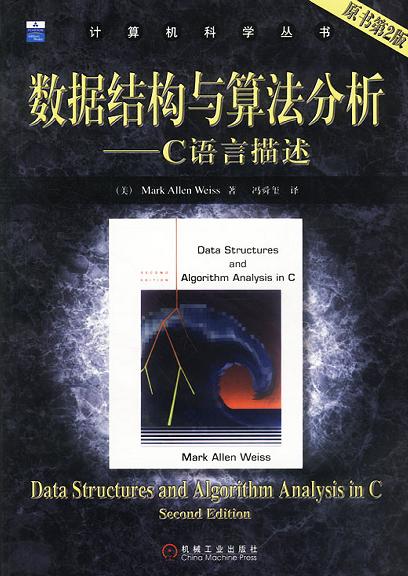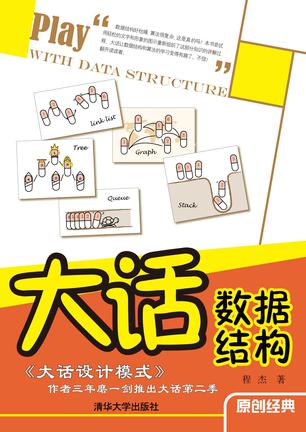重构
内容简介
本书清晰地揭示了重构的过程,解释了重构的原理和最佳实践方式,并给出了何时以及何地应该开始挖掘代码以求改善。书中给出了70多个可行的重构,每个重构都介绍了一种经过验证的代码变换手法的动机和技术。本书提出的重构准则将帮助你一次一小步地修改你的代码,从而减少了开发过程中的风险。本书适合软件开发人员、项目管理人员等阅读,也可作为高等院校计算机及相关专业师生的参考读物。
......(更多)
作者简介
Martin Fowler,世界软件开发大师,在面向对象分析设计、UML、模式、XP和重构等领域都有卓越贡献,现为著名软件开发咨询公司ThoughtWorks的首席科学家。他的多部著作《分析模式》、《UML精粹》和《企业应用架构模式》等都已经成为脍灸人口的经典。
......(更多)
目录
Chapter 1:Refactoring,a First Example 重构,第一个例子
The Starting Point 起点
The First Step in Refactoring 重构第一步
Decomposing and Redistributing the Statement Method 分解并重组slalemenl方法
Replacing the Conditional Logic on Price Code with Polymorphism 用多态代替价格条件逻辑代码
Final Thoughts 结语
Chapter 2:Principles in Refactoring 重构原则
Defining Refactoring 何谓重构
Why Should You Refactor? 为何重构
When Should You Refactor? 何时重构
What Do I Tell My Manager? 怎样说服经理
Problems with Refactoring 重构的问题
Refactoring and Design 重构与设计
Refactoring and Performance 重构与性能
Where Did Refactoring Come From? 重构的起源
Chapter 3:Bad Smells in Code(by Kent Beck and Martin Fowler) 代码坏昧
Duplicated Code 重复代码
Long Method 过长方法
Large Class 过长类
Long Parameter List 过长参数列表
Divergent Change 发散式变化
Shotgun Surgery 霰弹式修改
Feature Envy 特性依恋
Data Clumps 数据泥团
Primitive Obsession 基本类型偏执
Switch Statements switch语句
Parallel Inheritance Hierarchies 平行继承体系
Lazy Class 冗余类
Speculative Generality 理论上的一般性
Temporary Field 临时字段
Message Chains 消息链
Middle Man 中间人
Inappropriate Intimacy 过度亲密
Alternative Classes with Different Interfaces 接口不同的等效类
Incomplete Library Class 不完整的库类
Data Class 数据类
Refused Bequest 拒绝继承
Comments 注释过多
Chapter 4:Building Tests 构建测试
The Value of Self-testing Code 自测试代码的重要性
The JUnit Testing Framework Junit测试框架
Adding More Tests 添加更多测试
Chapter 5:Toward a Catalog of Refactorings 重构目录
Format of the Refactorings 重构描述的格式
Finding References 寻找引用
How Mature Are These Refactorings? 这些重构的成熟度如何
Chapter 6:Composing Methods 组合方法
Extract Method 提取方法
Inline Method 内联方法
Inline Temp 内联临时变量
*Replace Temp with Query 用查询方法代替临时变量
Introduce Explaining Variable 引入解释性变量
Split Temporary Variable 分离临时变量
*Remove Assignments to Parameters 去除参数赋值
Replace Method with Method Object 用方法对象代替方法
Substitute Algorithm 替换算法
Chapter 7:Moving Features Between Objects 在对象之间移动特性
*Move Method 移动方法
Move Field 移动字段
Extract Class 提取类
Inline Class 内联类
Hide Delegate 隐藏委托类
Remove Middle Man 去除中间人
Introduce Foreign Method 引入外加方法
*Introduce Local Extension 引入本地扩展类
Chapter 8:Organizing Data 组织数据
Self Encapsulate Field 自封装字段
Replace Data Value with Object 用对象代替数据值
Change Value to Reference 将值对象改为引用对象
Change Reference to Value 将引用对象改为值对象
Replace Array with Object 用对象代替数组
Duplicate Observed Data 重复被观察数据
*Change Unidirectional Associationto Bidirectional 将单向关联改为双向
Change Bidirectional Association to Unidirectional 将双向关联改为单向
*Replace Magic Number with Symbolic Constant 用字面常量代替魔数
Encapsulate Field 封装字段
Encapsulate Collection 封装集合
Replace Record with Data Class 用数据类代替记录
*ReplaceType Code with Class 用类代替类型码
Replace Type Code with Subclasses 用子类代替类型码
Replace Type Code with State/Strategy用State/Strategy 代替类型码
Replace Subclass with Fields 用字段代替子类
Chapter 9:Simplifying Conditional Expressions 简化条件语句
Decompose Conditional 分解条件语句
Consolidate Conditional Expression 合并条件语句
Consolidate Duplicate Conditional Fragments 合并重复的条件片段
Remove Control Flag 去除控制标志
Replace Nested Conditional with Guard Clauses 用守卫语句代替嵌套条件语句
Replace Conditional with Polymorphism 用多态代替条件语句 Introduce Null Object 引入Null对象
Introduce Assertion 引入断言
Chapter 10:Making Method Calls Simpler 简化方法调用
Rename Method 重命名方法
Add Parameter 添加参数
Remove Parameter 去除参数
Separate query from Modifier 将查询方法与修改方法分离
Parameterize Method 参数化方法
Replace Parameter with Explicit Methods 用显式方法代替参数
Preserve Whole Object 保持对象完整
Replace Parameter with Method 用方法代替参数
Introduce Parameter Object 引入参数对象
Remove Setting Method 去除设置方法
Hide Method 隐藏方法
Replace Constructor with Factory Method 用工厂方法代替构造器
Encapsulate Downcast 封装向下转型
Replace Error Code with Exception 用异常代替错误码
Replace Exception with Test 用测试代替异常
Chapter 11:Dealing with Generalization 处理泛化关系
Pull Up Field 上移字段
Pull UP Method 上移方法
Pull Up Constructor Body 上移构造器主体
Push Down Method 下移方法
Push Down Field 下移字段
Extract Subclass 提取子类
Extract Superclass 提取超类
Extract Interface 提取接口
Collapse Hierarchy 合并继承层次
Form Template Method 形成Template Method
Replace Inheritance with Delegation 用委托代替继承
Replace Delegation with Inheritance 用继承代替委托5
Chapter 12:Big Refactorings(by Kent Beck and Martin Fowler) 大型重构
Tease Apart Inheritance 分解继承层次
Convert Procedural Design to Objects 将过程式设计转换为面向对象
Separate Domain from Presentation 将领域逻辑与表现分离
Extract Hierarchy 提取继承层次
Chapter 13:Refactoring,Reuse,and Reality(by William Opdyke) 重构,复用与现实
A Reality Check 现实的检验
Whv Are Developers Reluctant to Refactor Their Programs? 开发人员为何不愿重构程序
A Reality Check(Revisited) 再谈现实的检验
Resources and References for Refactoring 重构的资源和参考文献
Implications Regarding Software Reuse and Technology Transfer 对软件复用与技术传播的意义
A Final Note 结语
References 参考文献
Chapter 14:Refactoring Tools(by Don Roberts and John Brant) 重构工具
Refactoring with a Tool 使用工具重构
Technical Criteria for a Refactoring Tool 重构工具的技术标准
Practical Criteria for a Refactoring Tool 重构工具的实用标准
Wrap Up 结语
Chapter 15:Putting It All Together(by Kent Beck) 集大成
References参考文献
List of Soundbites 要点列表
Updates 更新内容
Index 索引
......(更多)
读书文摘
只有深刻认识不确定性,才能真正理解信息化。对不确定性的恐惧是人类社会认知的动力,不确定性源于信息约東条件下人们有限的认知能力。在任何时代,化解对不确定性恐惧的三步曲是对客观世界的理解、预测、控制,从远古到现代,人类一直在努力提高认识世界的水平,以观察世界、理解规律、指导实践,来解释过去、阐明现在、预测未来,终极目的在于提升认知水平以提高驾驭不确定性的能力。
回顾工业革命近三百多年发展史,每次技术变革都将带来社会生产过程确定性的大幅提高,从提高动力输出确定性的内燃机,到提高产品精度确定性的可编程逻辑控制器,再到提高企业管理运营确定性的软件系统,确定性是不变的追求。而每次确定性的提升都伴随着更大范围不确定性的涌现,不确定性是永恒的主题。
It is better to write and run incomplete tests than not to run complete tests.
to make the software easier to understand and modify.
......(更多)






